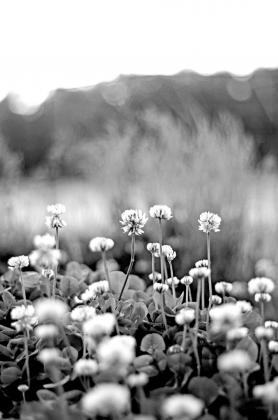There are many advantages to planting legumes in pasture swards. Some of these benefits are: reduction or even elimination of inorganic nitrogen fertilizers, reduction in winter feeding costs as grazing can begin four to six weeks earlier in the spring, improved animal performance, lengthened grazing season, improved soil tilth, wildlife programs, weed suppression and subsequent reduced herbicide use.
Legumes can be used as a source of inorganic nitrogen. Lack of nitrogen is the first limiting nutrient for crop production. Forage legumes fix atmospheric nitrogen through symbiosis with Rhizobium bacteria. A healthy stand of arrowleaf or crimson clover overseeded on warm season perennial grass pasture in East Texas can provide a nitrogen input of 50 to 100 lbs of nitrogen per acre per year. This is accomplished through a grazing system with recycling of animal wastes. Legumes also usually have a higher nutritive value than most grasses.
Legumes need an average pH of six to seven. While sensitive to fertilizers, legumes can shade out grass altogether in high growth.
Legumes thrive best when the seeds have been innoculated, as the necessary bacteria are planted with the seeds. If the seed is not inoculated, bacteria may be added to the mix for better germination. Coated seeds are not only inoculated, but also coated to protect the bacteria until germination of the seed.
To get the most out of seeding legumes, try planting in areas less overgrown with weeds. Herbicides may be used to discourage weeds as long as it is not detrimental to the legume as well. Small grains tend to outpace legumes when planted together.
Alfalfa
A perennial, cool-season legume, alfalfa grows to a height of 24 to 36 inches. Southern varieties usually have purple blossoms. Alfalfa is drought-tolerant with a long taproot, and requires well-drained soils. If it is planted on land with a very acidic subsoil containing large amounts of toxic aluminum however, it will have a more shallow root system and lower yields.
Seeding rate is 15 to 20 pounds per acre and a firm seedbed is very important. Soil pH should be 6.5 or higher. Required soil nutrients are potassium, phosphorus, sulfur and boron; these usually need to be applied for good production.
Alfalfa will fix large amounts of atmospheric nitrogen if the planted seeds are properly inoculated.
Ball Clover
An annual, cool-season legume, ball clover can reach heights of three feet. Small, fragrant white blossoms produce seeds that are smaller than white clo
An annual, cool-season legume, ball clover can reach heights of three feet. Small, fragrant white blossoms produce seeds that are smaller than white clover. Seeds are hard and production is prolific resulting in good natural reseeding.
Broadcast seeding rate is two to three pounds per acre in Sept. through Oct. Ball clover will germinate at lower temperatures than most annual clovers and is more tolerant of soil acidity than crimson clover. However, it has a short season of production during late March to early May.
Ball clover is used for pasture and honey production, though bloat can be an issue.
It tolerates heavy grazing and will produce seed heads close to the ground. Close grazing in the fall tends to encourage reseeding.
Arrowleaf Clover
An annual, cool-season legume, arrowleaf clover can be managed for reseeding as long as it is not grazed until June. Blossoms start out white but tend to turn pink to purple.
Arrowleaf clover is highly susceptible to disease, though some varieties, such as Apache Arrowleaf (TAMU-Overton) are more disease tolerant.
A firm seedbed and well-drained soil is preferred. Soil pH should be between 5.8 and 6.5. Seed at 10 to 15 pounds per acre. Light disking before and after broadcasting seed will assist proper seed to soil contact and will encourage germination.
Warm-season grasses should be around two inches in height at time of seeding arrowleaf clover.

